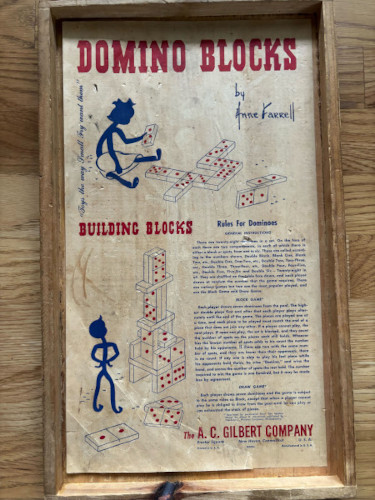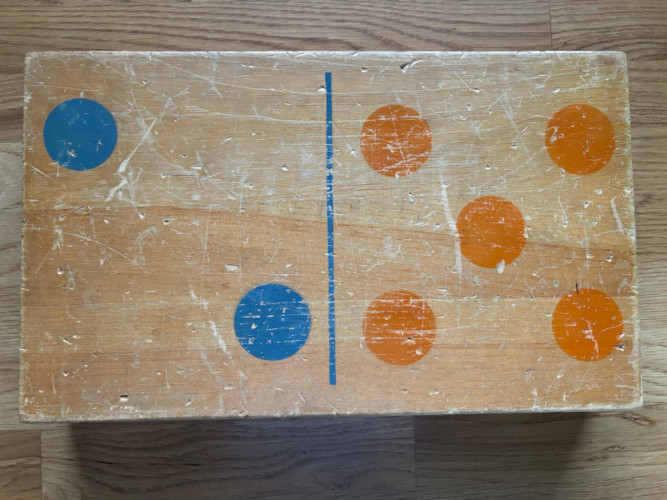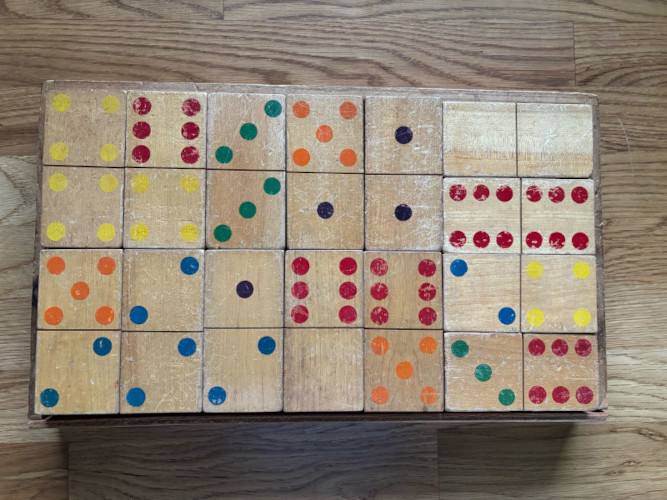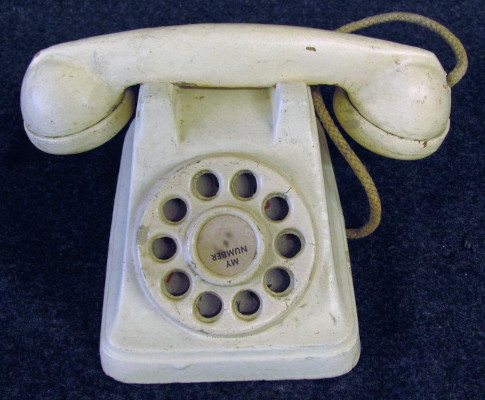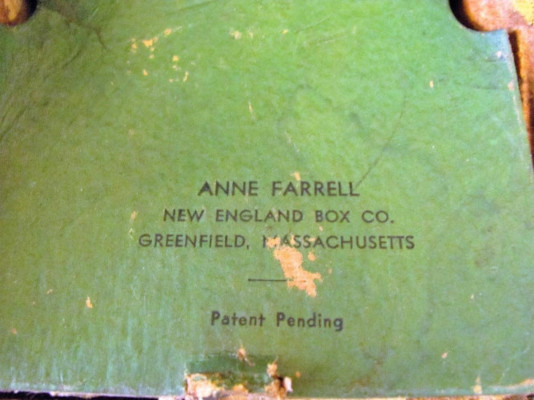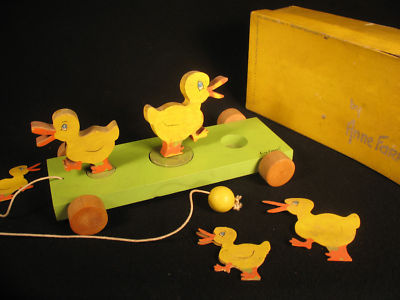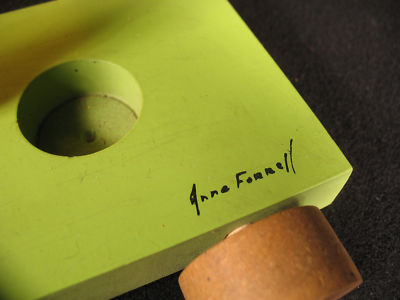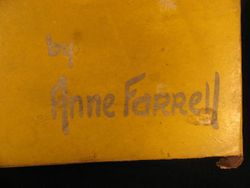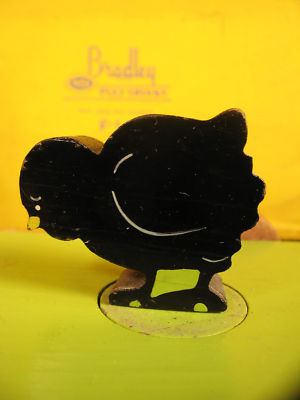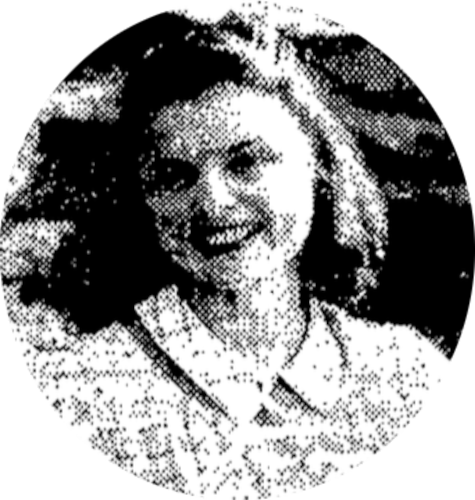
Anne Farrell: A Portrait of a Toy Designer
When you come across a toy, have you ever wondered about the mind behind its creation, the person who conceptualized and designed it? Such thoughts never crossed my mind until I encountered the Domino Blocks from the 1950s, manufactured by A. C. Gilbert. On the back of the wooden box, an uncommon sight caught my eye: it read, “Domino Blocks by Anne Farrell.”
It’s remarkably rare for a toy designer’s name to be prominently featured on their creation, and even more so when it’s an A. C. Gilbert toy, considering that A. C. Gilbert himself is renowned for inventing the iconic Erector Sets. The label sparked an interest in me, drawing me into the world of Anne Farrell, a visionary who left her mark on the world of toys.
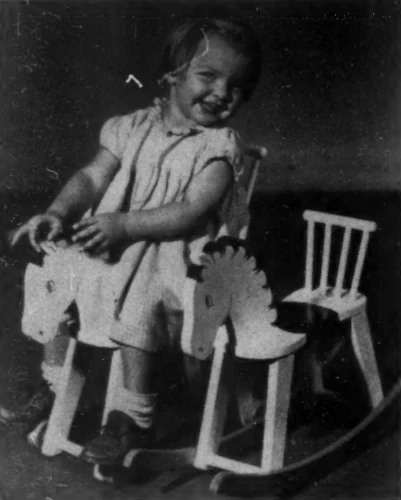
Hobby horse designed by Anne Farrell. Image courtesy, Design; Devoted to the Decorative Arts, 1941
My quest to uncover the story of Anne Farrell began with a quick online search, though information was sparse. I stumbled upon her obituary on a grave site, which provided a short glimpse into her life. Born on November 23, 1910, in Mount Bliss, Michigan, Anne Farrell was the daughter of Mr. and Mrs. Henry John Farrell.

Anne Farrell observing a child playing with one of her creations. Image courtesy, Design; Devoted to the Decorative Arts, 1941
Her journey into toy design began at Marygrove College in Detroit. It was there that she first encountered the frustrations of her nursery teacher friend, who complained about the lack of durable, functional toys for children. Most of the available toys were fragile and often made from harmful materials, sparking in Anne a desire to create something better.
Driven by a newfound interest, Anne Farrell decided to embark on an educational journey to master the art of toy design. She enrolled in Columbia University, taking courses in design, child psychology, and merchandising. Upon her graduation, she landed a position at Saks Fifth Avenue in their toy department. There, Anne had the opportunity to put her knowledge into practice, contributing to the design of a line of sand cars manufactured and sold exclusively by Saks.
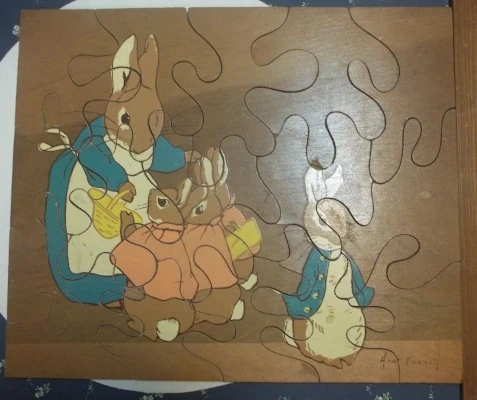
Peter Rabbit puzzle designed by Anne Farrell.
Anne made various attempts to present her designs to various toy manufacturers. While many companies appreciated her innovative ideas, they were reluctant to take the risk, as her designs were a significant departure from the conventional toys of that era.
During this period, Anne Farrell’s journey took an unexpected turn when she encountered Alva Myrdal, a future Nobel Peace laureate from Sweden, and Einer Kumm. They recognized her potential and sponsored her trip to Sweden, giving Anne an opportunity to work at Akuma toy factory in Tyringe. Anne worked closely with skilled woodworkers, learning and creating new toy designs. This experience helped her ideas take shape and grow. Anne’s days in Sweden drew to a close as the ominous clouds of World War II began to gather over Europe. It was on September 1, 1939, the very day Anne’s toys were set to be sold to the public in the Swedish market, that Hitler launched his invasion of Poland.
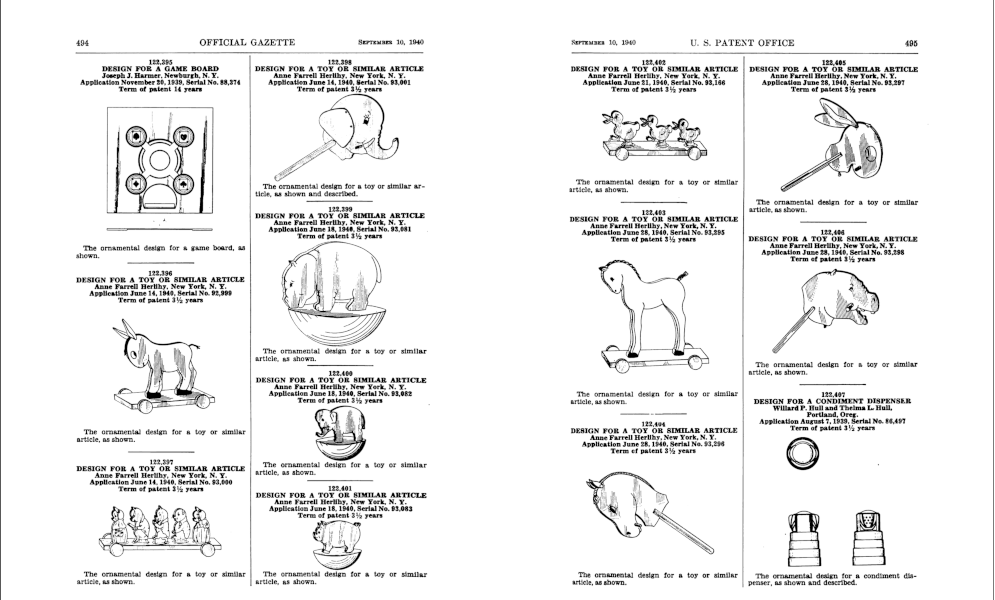
Patents filed under Anne Farrell Herlihy’s name in 1940.
When Anne returned to the United States, toy makers and buyers became more interested in American-made toys. As the war loomed, people in America started to avoid toys made in Germany, Italy, and Japan. In 1940, Anne filed several patents for her wooden toys. Curiously, all her patents were filed under the name Anne Farrell Herlihy. It is reported that two large toy companies manufactured her toys, but she did her own marketing from her base in New York City.
She also began designing toys for Milton Bradley around this time. She split her time between overseeing toy production at Springfield and creating new, high-quality wooden toys in New York. Anne’s toys were produced under the Milton Bradley Laboratories brand, each meticulously packaged in a wooden box that proudly bore the label: “Milton Bradley Laboratories, Springfield, MA, USA.” The box also featured the tagline, “TOYS THE WAY CHILDREN WANT THEM,” and every toy inside was personally signed by Anne herself. Anne traveled extensively as an associate of the company, promoting her toys to parents and engaging in discussions about the role of toys in modern educational theory. In 1942, she married John Daniel Ford, a U.S. Army Captain during World War II.
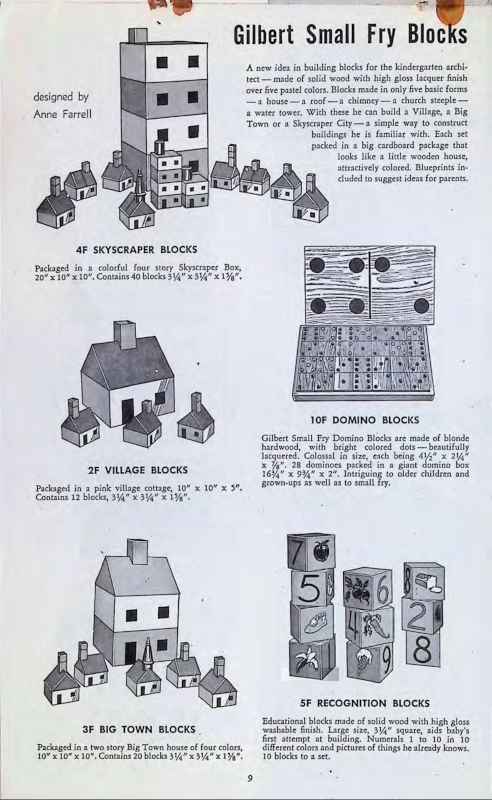
Anne Farrell designed toys in 1947 Gilbert Scientific Toys catalog. Image courtesy, A.C. Gilbert Heritage Society
By late 1940s, Anne was hired by A. C. Gilbert to design simple wooden toys for “children of the pre-screwdriver stage”. Anne’s imagination had no limits, and she came up with many toys for young children. One of her creations was a simple six-inch cube. This toy was designed to be held with both hands, encouraging kids to use both hands equally while also helping with their overall development. During this period, Anne also created other building toys, including the delightful Domino Blocks, each of them carrying her signature on the box.
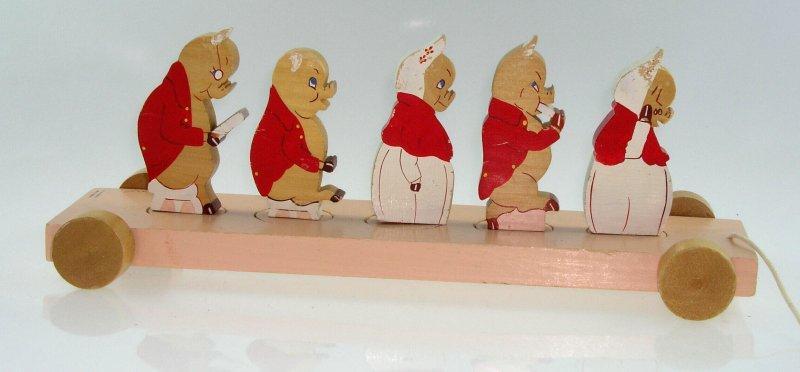
One of Anne Farrell’s creations, five pigs, mentioned in one of her patents. Image courtesy All About Old Toys
I’m not sure why Anne’s toys are hard to find except for the Domino Blocks. The only other toys I have come across are the building blocks and five pigs from one of her patents. I’ve seen pictures in publications of wooden trains, automobiles, and rocking horses she designed. Anne made sturdy wooden toys with rounded corners, built to last for generations. They remind me of the wooden toy tradition from the Scandinavian countries.
By the late 1950s, it seemed as though Anne had quietly stepped away from the world of toy design, her name fading from the pages of the industry’s history. My search yielded no signs of her work beyond that period. Anne Farrell’s journey, remarkable and influential, ultimately concluded on October 9, 1998, in the town of Charlevoix, Michigan, leaving behind a legacy of enduring wooden toys cherished by generations.
References
-
Successful Toy Designer, Ogdensburg Journal, Tuesday, December 24, 1940.
-
Official Gazette US Patents, 1940
-
Durney, Helen., Good Design in Toys for Children, vol 43, Design; Devoted to the Decorative Arts, 1941.
-
Newton Graphic, September, 1941
-
Anne Farrell - Toy Lady, Sales Management, 1943
-
Millstein, Gilbert., Toy King, Life Magazine, November 19, 1946.
-
1947 Catalog Gilbert Scientific Toys, A. C. Gilbert Company, New Haven, Connecticut.
-
Anne Farrell, The Charlevoix County News, October 14, 1998.
